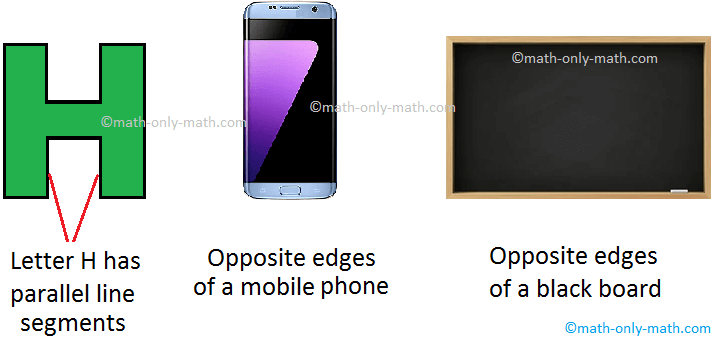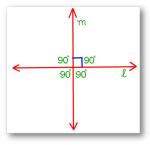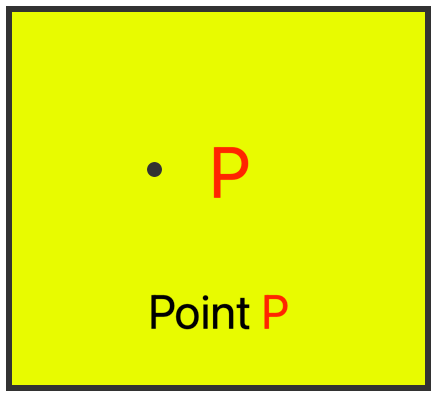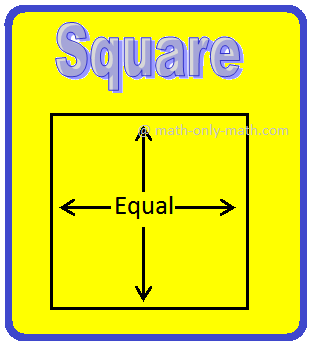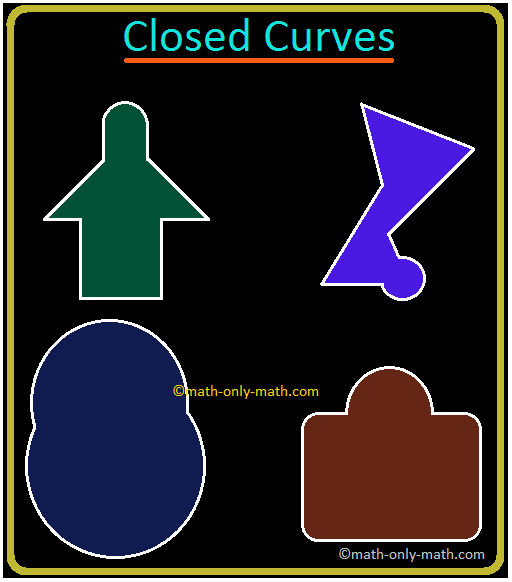Condition of Parallelism
We will discuss here about the condition of parallelism.
If two lines are parallel then they are inclined at the same angle θ with the positive direction of the x-axis. So, their slopes are equal.
Two lines with slopes m\(_{1}\) and m\(_{2}\) are parallel if and only if m\(_{1}\) = m\(_{2}\)
Note: If the slope of a line is m then any line parallel to it will also have the slope m.
Solved examples on condition of parallelism:
1. Prove that the lines 3x – 2y – 1 = 0 and 9x - 6y + 5 = 0 are parallel.
Solution:
The slope of the lines can be found by comparing the equations with y = mx + c.
Equation of the first straight line 3x – 2y – 1 = 0
Now we need to express the given equation in the form y = mx + c.
3x – 2y – 1 = 0
⟹ -2y = -3x + 1
⟹ y = \(\frac{-3}{-2}\)x + \(\frac{1}{-2}\)
⟹ y = \(\frac{3}{2}\)x - \(\frac{1}{2}\)
Therefore, the slope (m\(_{1}\)) of the given line = \(\frac{3}{2}\)
Equation of the second line 9x - 6y + 5 = 0
Now we need to express the given equation in the form y = mx + c.
9x - 6y + 5 = 0
⟹-6y = -9x - 5
⟹ y = \(\frac{-9}{-6}\)x - \(\frac{5}{-6}\)
⟹ y = \(\frac{3}{2}\)x + \(\frac{5}{6}\)
Therefore, the slope (m\(_{2}\)) of the given line = \(\frac{3}{2}\)
Now we can clearly see that the slope of the first line m\(_{1}\) = the slope of the second line m\(_{2}\)
Therefore, the given two lines are parallel.
2. Find the value of k if the lines 7y = kx + 4 and x + 2y = 3 are parallel.
Solution:
The slope of the lines can be found by comparing the equations with y = mx + c.
Equation of the first straight line 7y = kx + 4
Now we need to express the given equation in the form y = mx + c.
7y = kx + 4
⟹ y = \(\frac{k}{7}\)x + \(\frac{4}{7}\)
Therefore, the slope (m\(_{1}\)) of the given line = \(\frac{k}{7}\)
Equation of the second line x + 2y = 3
Now we need to express the given equation in the form y = mx + c.
x + 2y = 3
⟹ 2y = -x + 3
⟹ y = -\(\frac{1}{2}\)x + \(\frac{3}{2}\)
Therefore, the slope (m\(_{2}\)) of the given line = -\(\frac{1}{2}\)
Now according o the problem the two given lines are parallel.
i.e., m\(_{1}\) = m\(_{2}\)
⟹ \(\frac{k}{7}\) = -\(\frac{1}{2}\)
⟹ k = -\(\frac{7}{2}\)
Therefore, the value of k = -\(\frac{7}{2}\)
● Equation of a Straight Line
- Inclination of a Line
- Slope of a Line
- Intercepts Made by a Straight Line on Axes
- Slope of the Line Joining Two Points
- Equation of a Straight Line
- Point-slope Form of a Line
- Two-point Form of a Line
- Equally Inclined Lines
- Slope and Y-intercept of a Line
- Condition of Perpendicularity of Two Straight Lines
- Condition of parallelism
- Problems on Condition of Perpendicularity
- Worksheet on Slope and Intercepts
- Worksheet on Slope Intercept Form
- Worksheet on Two-point Form
- Worksheet on Point-slope Form
- Worksheet on Collinearity of 3 Points
- Worksheet on Equation of a Straight Line
From Condition of Parallelism to HOME
Didn't find what you were looking for? Or want to know more information about Math Only Math. Use this Google Search to find what you need.
Recent Articles
-
What are Parallel Lines in Geometry? | Two Parallel Lines | Examples
Apr 19, 24 04:39 PM
In parallel lines when two lines do not intersect each other at any point even if they are extended to infinity. What are parallel lines in geometry? Two lines which do not intersect each other -
Perpendicular Lines | What are Perpendicular Lines in Geometry?|Symbol
Apr 19, 24 04:01 PM
In perpendicular lines when two intersecting lines a and b are said to be perpendicular to each other if one of the angles formed by them is a right angle. In other words, Set Square Set Square If two… -
Fundamental Geometrical Concepts | Point | Line | Properties of Lines
Apr 19, 24 01:50 PM
The fundamental geometrical concepts depend on three basic concepts — point, line and plane. The terms cannot be precisely defined. However, the meanings of these terms are explained through examples. -
What is a Polygon? | Simple Closed Curve | Triangle | Quadrilateral
Apr 19, 24 01:22 PM
What is a polygon? A simple closed curve made of three or more line-segments is called a polygon. A polygon has at least three line-segments. -
Simple Closed Curves | Types of Closed Curves | Collection of Curves
Apr 18, 24 01:36 AM
In simple closed curves the shapes are closed by line-segments or by a curved line. Triangle, quadrilateral, circle, etc., are examples of closed curves.

